News
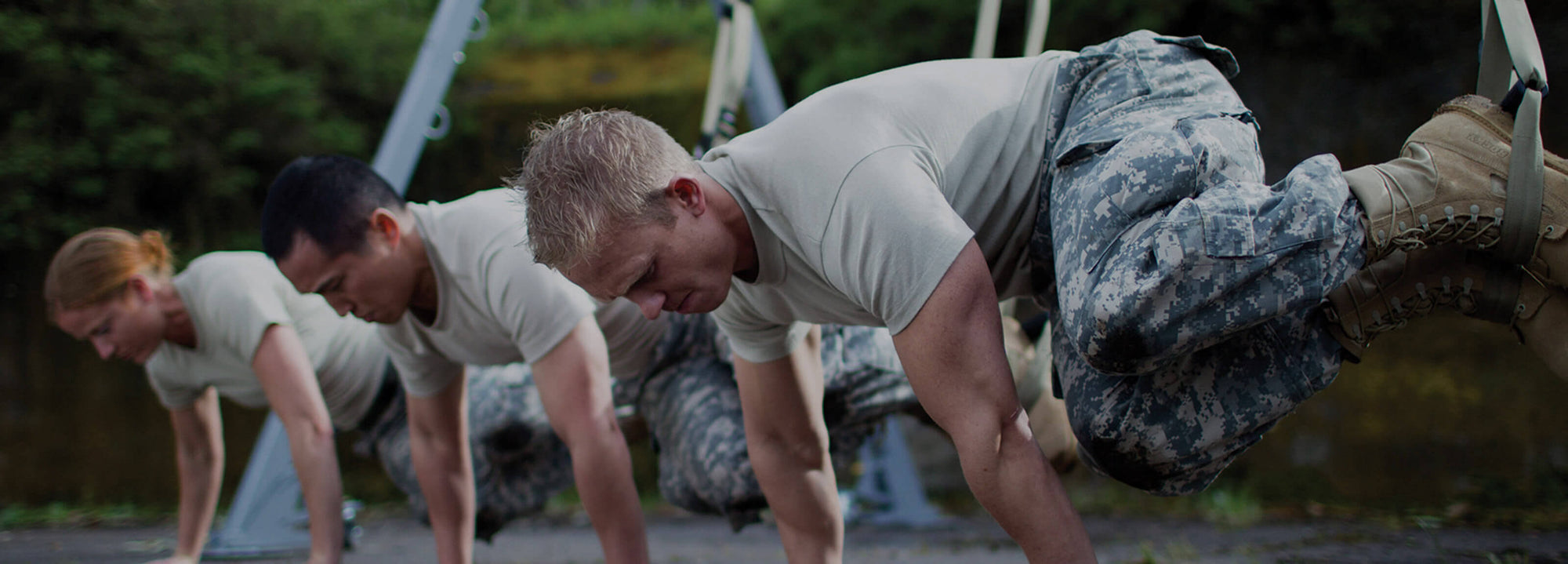
What is Operation: All In?
TRX® is committed to supporting veterans and active military. That’s a popular sentiment around holidays like Veterans Day, Independence Day, or Memorial Day, but at TRX, it’s a year-round priority. That’s why we’re proud to announce Operation: All In, our newest way of connecting the military community with world-class workouts.
TRX’s military roots
While anyone at any fitness level can use the TRX Suspension Trainer™, TRX founder and CEO Randy Hetrick developed the original Suspension Trainer prototype as a way to stay mission-ready while serving overseas as a Navy SEAL. Other members of his team noticed his invention and asked for their own.
More than 20 years later, members of every military branch continue to use the Suspension Trainer because it’s effective and portable. TRX even offers a special Digi Camo version of the straps with bigger foot cradles to accommodate combat boots.
Today, TRX continues to serve the military with both training tools and coaching through TRX Elite. Our combat-ready programming is designed by veterans to help our troops stay ready for whatever lies ahead.
What is TRX Training Club?
TRX Training Club is TRX’s exclusive streaming workout service. Whether you want to hop into a live class—sweating in real time with your favorite instructor—or stream a pre-recorded workout when it fits into your schedule, there’s a solution to help you meet your goals.
All you need is a phone, tablet, or computer and an Internet connection to get started. If you like a big screen experience, you can even cast your workouts to your TV.
Who can join Operation: All In?
If you’re a veteran or active service member who wants to move, we want you to sweat with us. Regardless of your age, enlistment status, ability, or mobility challenges, we’re here for you.
To sign up for your free year of TRX Training Club On-Demand access, you’ll need your ID.me online verification of your military ID. Got your eye on some gear to go with those workouts? Your ID.me verification also unlocks a 20% TRX Elite discount for any equipment on TRXtraining.com.
While many of the available workouts use the TRX Suspension Trainer™, you don’t have to own straps to stream a class; we also offer On-Demand classes using kettlebells, resistance bands, and bodyweight.
If you’re not affiliated with the military, you can still sign up for a free, 7-day trial of TRX Training Club. After that, memberships are $4.99 per month for access to the On-Demand library only, or $19.99 per month for unlimited access to both Live workouts and the On-Demand library.
Are there different Operation: All In packages?
We’re currently offering three Operation: All In packages.
Free TRX Training Club On-Demand membership: Includes unlimited access to 300+ On-Demand workouts on TRX Training Club, with more workouts being added all the time.
On-Demand Membership + Digi Camo Pro4 Suspension Trainer ($129, regularly $309.94): Includes a TRX Digi Camo Pro4 Suspension Trainer + one year’s access to TRX Training Club’s On-Demand library.
All-Access Membership + Digi Camo Pro4 Suspension Trainer ($169, regularly $459.94)): Includes a TRX Digi Camo Pro4 Suspension Trainer + one year’s access to both Live and On-Demand sessions on TRX Training Club + one free virtual personal training session.
Join TRX in supporting veterans and service members
Operation: All In is one way of saying thanks to all those who serve this country, but it’s not the only way we support veterans. We also provide gear and financial support to Boulder Crest, a non-profit warrior care facility, and we’ve donated to the Special Operations Warrior Foundation.
Both of those organizations are non-profits that we continue to support through our partnership with ShoppingGives. Every time you make a purchase with TRX, you have the option at checkout to direct 1% of your purchase price to one of the hundreds of charities that have been vetted through ShoppingGives. Whether it’s a military-support charity, or another non-profit that’s close to your heart or community, TRX wants to back the causes you care about. (You can read more about how ShoppingGives works here.)
Know a veteran or active service member? Let them know about Operation: All In. This is one small way of recognizing the heroes who’ve worn a military uniform.
And remember: you don’t have to pass Basic Training to enjoy a TRX workout. Whether you’re in the service or a civilian, TRX is made for anybody, anywhere.
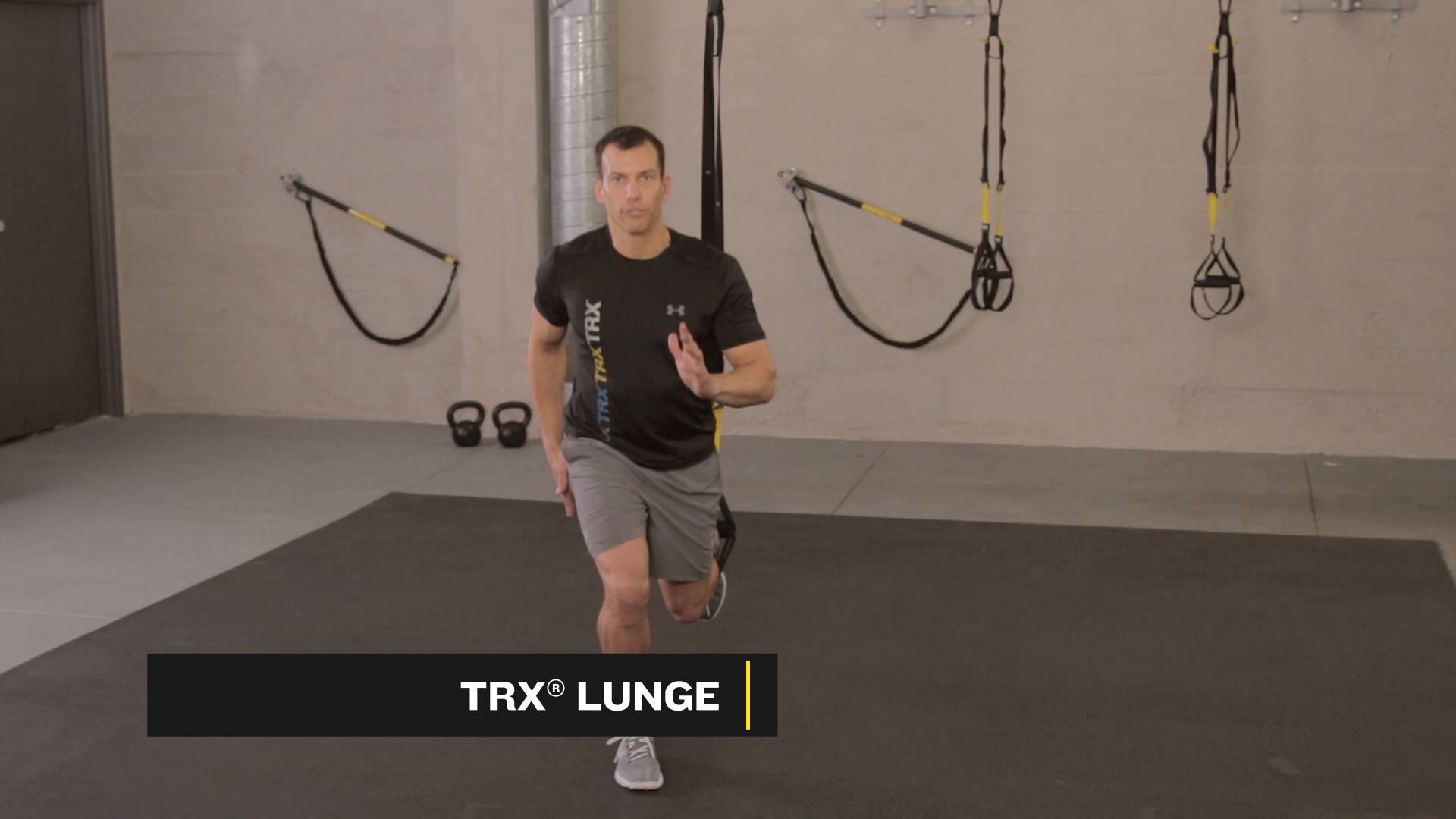
Weight-Loss Workout: 15-Minute Fitness with Jay Cardiello
Light up your metabolism and burn a ton of calories with this incredible, fat-torching workout from celebrity fitness expert Jay Cardiello and TRX. With these five simple moves you can get in great shape virtually anywhere. The best part? This workout only lasts 15 minutes, so get ready to give it your all.
Perform each exercise for 60 seconds, resting for 30 seconds while you transition to the next movement. Looking to find the perfect exercise intensity for your fitness level? Take our quick assessment quiz for a personalized workout plan that matches your goals. When you finish all five exercises start run through the sequence one more time for a 15-minute workout. For the first round perform the single-leg exercises on your right side, then switch to the left for the second.
TAKE OUR TRAINING QUIZ
TRX Atomic PushupsStart in a pushup position with your feet in the foot cradles of the Suspension Trainer, directly under the anchor point, and your hands under your shoulders. Brace your core and perform a pushup. When you reach the top of the push up, pause for a moment and perform a TRX crunch by drawing your knees toward your chest and pikeing your hips up slightly. Pause for a moment at the top, then lower your hips back down and straighten your legs to return to the start position.
TRX Suspended LungesStart standing on one leg facing away from the anchor point with one foot suspended in both foot cradles. Brace your core and focus on standing up straight as though you are performing a single-leg plank while standing up. Drop your hips down and back into a deep lunge. Keep the shin of your working leg vertical and your chest up. Stop at the bottom when working knee is at 90 degrees. Drive through your front leg to return to the top of your lunge. Engage your core and keep your chest and head up throughout the entire movement.
TRX BurpeesWith the Suspension Trainer at mid calf place one foot in both foot cradles.Drive your suspended leg back, lower your hips until back knee is two inches from ground. Place your hands on the ground and hop your grounded leg straight back to a plank position. Perform a pushup then hop your grounded leg forward and explode up to a jump.
TRX SkatersStand facing the TRX Suspension Trainer holding the handles with both hands in front of you and your feet together. Jump to your right side and land on your right foot. Control your momentum by letting your knee bend as you land. Hop rapidly from side to side.
TRX Jump SquatsAdjust the TRX Suspension Trainer to mid length. Stand facing the TRX with your feet hip width apart. Position your elbows under your shoulders and lower your hips down and back, keeping your weight in your heels. Squeeze your glutes and drive your hips up to explode and jump at the top of your squat. Use the TRX straps to help you decelerate and land as softly as possible. Keep your chest lifted throughout the movement.
For more workouts from Jay Cardiello and TRX, check the rest of our 15-Minute Fitness Series.

Vertical Anchor Points: How to hook up your TRX Suspension Trainer
If you don't have a horizontal anchor point, you can hook up your TRX Suspension Trainer to a vertical anchor point, like a tree trunk or pole. Want to make sure you're setting up your TRX correctly for any environment? Take our quick assessment quiz to get personalized setup recommendations. This video takes you through four easy steps for successful vertical anchoring:
TAKE OUR TRAINING QUIZ
1. Wrap the TRX Xtender around any vertical anchoring spot (pole, tree, trunk, beam). The TRX Xtender allows you to safely attach the Suspension Trainer straps to high or oversized anchor points and keeps them tightly in place on any vertical pole with a smooth surface.
2. Pull the Anchoring Loop through the Larger Loop and pull to cinch.
3. Clip in the Carabiner.
4. Check that the bottom of the TRX Suspension Trainer's Equalizer Loop is 6' off the ground (or that the bottom of the foot cradles are 3' off the ground). If not, reposition the TRX Xtender to ensure that it is. Weight test before beginning to train.
If you don't have a TRX Xtender, you can buy one in our shop.

Upper Body Workout: 15-Minute Fitness with Jay Cardiello
TRX Training
Develop a bigger, stronger and more defined upper body with this 15-minute workout from celebrity fitness expert Jay Cardiello and TRX. Sometimes the hardest part about your workout is just finding time to do it. That’s why we’ve developed this super time-efficient upper-body workout for building the chest, arms and back you’ve always wanted, in the time you have.Perform each exercise for 60 seconds with 30 seconds rest while you transition to the next exercise. Perform the entire sequence two times through for a total of 15 minutes. If you want more, check out the rest of our 15-Minute Fitness series, here.TRX Chest Press
Stand facing away from the anchor point with the your hands holding the handles out in front of you. Brace your core and focus on holding a solid plank. Lower your chest towards your hands, and focus on moving your entire body as a plank. Stop when your hands are in line with your chest. Press yourself back up in one slow controlled movement, focus on keeping your knees, hips and shoulders in line the entire way up.
TRX Low Row The low row exercises your lats and the rest of your back muscles. Stand facing the anchor point while holding onto the handles and lean back, keeping tension on the straps. Using your back muscles, row your body up until your hands are on the sides of your chest. Brace your core and try to move your whole body in one controlled movement.
TRX Squat Row Stand facing the Suspension Trainer with your feet facing forward, hip-width apart, holding the handles out in front of you. Brace your core and engage your glutes and hamstrings as though you are performing a plank while standing up. Drop your hips down and back, while pushing your knees out. Then drive your hips forward to return to your standing plank. Use your back and arm muscles to row yourself up until your hands are on the sides of your chest. Lower yourself back to the start position in one slow, controlled motion.
TRX Biceps CurlAdjust your Suspension Trainer to mid length and stand facing the anchor point with your elbows bent, just higher than shoulders. Align your pinkies with your temples and walk your feet toward the anchor point until there is a little tension in the biceps. Lower yourself down until your arms are fully extended while maintaining plank. Pull your body toward the anchor point by bringing pinkies back to your temples, elbows high, eyes on the anchor point.
TRX Triceps PressStand facing away from the anchor point, holding the Suspension Trainer by the handles. Keep your elbows high and in line with your shoulders. Put your hands next to your temples with your palms facing away from your body. Brace your core and focus on maintaining tension throughout your entire body. Press down into the handle, keeping everything stable except for your elbow joint, until your arms are fully extended. Lower your body down in one slow, controlled movement until your hands are back at the start position.
For more workouts from Jay Cardiello and TRX, check the rest of our 15-Minute Fitness Series.
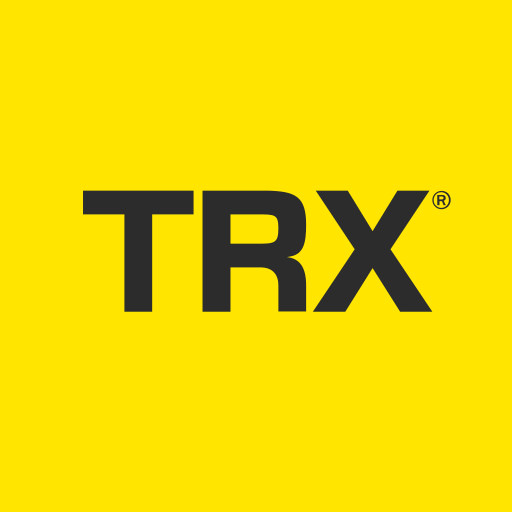
Understanding Your TRX Content
Your TRX CORE account provides you with content that complements the TRX Education Courses you have completed. You only receive content that pertains to the types of courses you have taken.
If you have completed any TRX Suspension Training Course (STC, GSTC, SMSTC, CTSTC, FL1, FL2, FL3), you will only find content in your locker related to training with the TRX Suspension Trainer. If you have completed any TRX Rip Training Course (RTC, GRTC), the content in your locker will be specifically for training with the TRX Rip Trainer.
If you have taken both Suspension Training and Rip Training Courses, you’ll receive content for both.
No matter what TRX Education Courses you have taken, you will also find content in your locker called TRX Fusion. Use this content to learn how to integrate both TRX Suspension Training and Rip Training into your programming.
Not sure which training combination best suits your goals? Take our quick assessment quiz to get personalized recommendations for integrating TRX equipment into your workouts.
TAKE OUR TRAINING QUIZ
Want more? Take a TRX Education Course in a new modality to increase your TRX Rank and add content to your locker.

Try This Free Add-On With Your Next TRX at Home Workout
Fitness classes are the ultimate trifecta: physical activity, sweat therapy, and jam session. This spring, TRX launched its TRX LIVE series, delivering fresh, daily workouts from some of the top TRX trainers around the world. Now, we’re sweetening that experience with our TRX Spotify channel. Photo by sgcdesignco on Unsplash Make It Work For many of you, music is a major motivator and this is another way to enjoy the complete TRX class experience at home. If you’re working out with TRX LIVE via desktop, download and open the Spotify app on your computer, and fire up one of our playlists. Our TRX workouts stream via YouTube, and you can run both a workout and a Spotify playlist at the same time. To adjust the sound balance between the music and your trainer’s instructions, check out the lower, right-hand corner of the Spotify window, where you’ll see a volume control slider to help you find the perfect level for your playlist. Once you adjust the slider, you can increase the overall volume using the standard sound controls on your computer. If you're streaming a TRX workout on your mobile device, here’s where things get slightly trickier. Neither iOS nor Android operating systems will let you run a browse video and Spotify concurrently on your phone or tablet, but you can use two separate devices. For example TRX LIVE on the tablet, Spotify on your phone or smartwatch. Photo by Alora Griffiths on Unsplash Pump Up the Jams Okay, there are TRX playlists, but what does that mean? It depends on who’s playing DJ. When TRX Master Trainer and six-time world logrolling champion Shana Verstegen is compiling her favorites, you’re going to hear the Backstreet Boys. “I have a very unhealthy obsession with the Backstreet Boys. Anybody who knows me even a little bit knows that it's pretty bad,” she said. Rob McCullough, Former World Extreme Cagefighting Champ and TRX Master Trainer, gravitates to EDM. “Regardless if it's got words or not. You're moving. I like that,” he said. On TRX Training and Development Manager Miguel Vargas’ ten (10!) hour playlist, you’ll hear everything from Beyoncé to Rage Against the Machine to Steve Aoki. When Zack Van Wagoner is working your arms to the point they might fall off, he’s probably playing rap. (Uncensored in his own workouts; radio-friendly edits at the TRX Training Center.) In other words, the TRX Spotify channel is like Forrest Gump’s box of chocolates: you never know what you’re gonna get. Crank up the tunes, or just enjoy some peace and quiet while you work out: either way, we’ve got fresh workouts rolling out daily on TRX LIVE to help you stay fit.
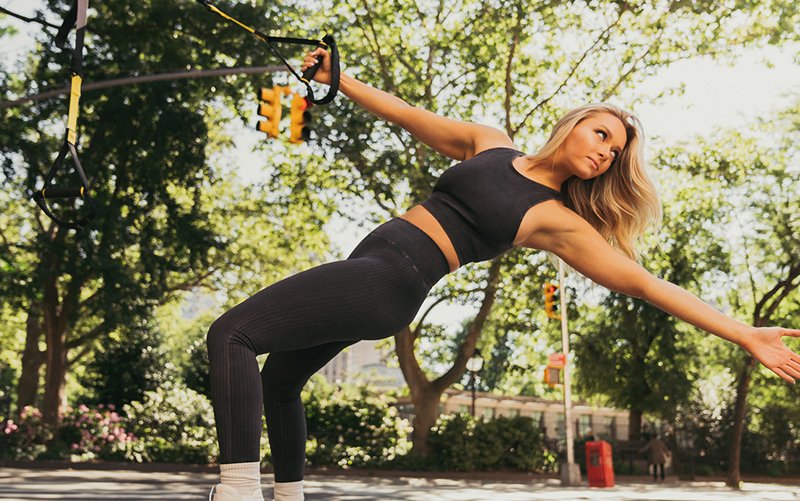
Understanding the TRX Directory and TRX Rank
The TRX Directory provides a rich resource for finding the very best TRX Qualified trainers wherever you live or travel. Many of the trainers you find in the TRX Directory have a TRX Rank, a Martial Arts-like color-coded system, to represent how they stack up among TRX’s most elite community of trainers. The more TRX Education Courses, TRX events and time they have spent honing their TRX Training skills, the higher their TRX Rank. The Rank of each Qualified TRX Trainer can be found on their TRX Directory profile.
Here is a breakdown of the points you can earn across different TRX Courses:
Digital Education Course - 3,000 pointsLevel 1 Education Course - 8,000 pointsLevel 2 Education Course - 16,000 pointsLevel 3 Education Course - 24,000 points*Trainer Summits - 8,000 points per day
Here are the requirements for each TRX Rank:
White Rank
4,000 points
Must complete a minimum of one, 4-hour TRX Professional Education Course
Yellow Rank
24,000 points
Gray Rank
70,000 points
Black Rank
150,000 points
Highly active in ongoing education, upskilling events and summits
Black & Yellow Rank:
The ultimate TRX Rank and Ambassador
TRX Black & Yellow Ranked members teach Professional Education Courses
To earn your TRX Rank, take a course here. To Join TRX CORE, click here.
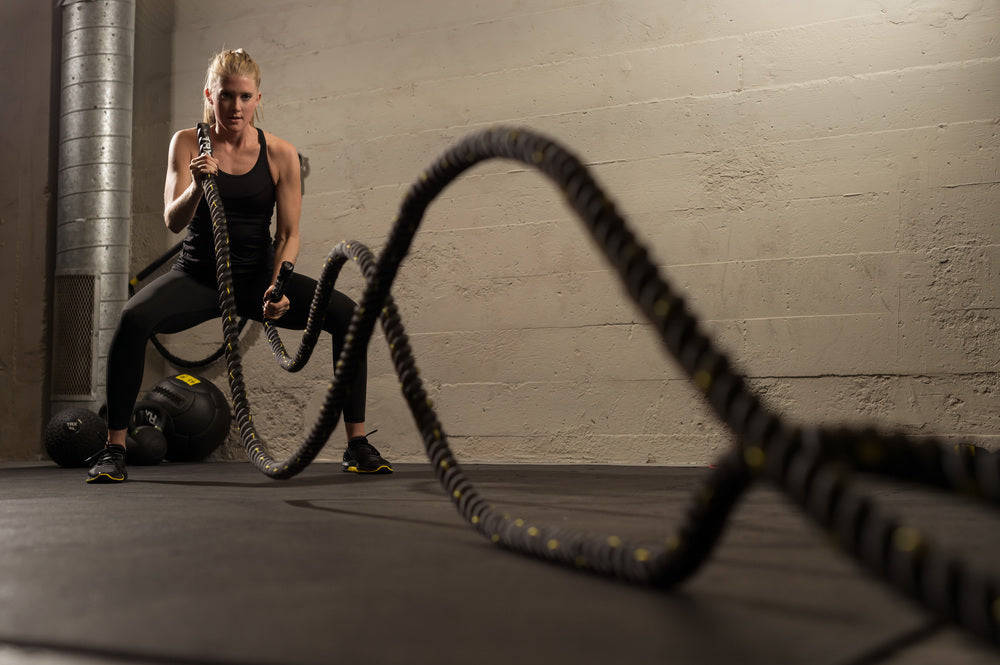
Try This Battle Rope Circuit To Get You Strong and Sweaty
Battle ropes are one of the unsung heroes of fitness. Battle rope exercises may look easy—Wave your arms up and down? No problem!—but those simple movements deliver a full body strength and endurance challenge.
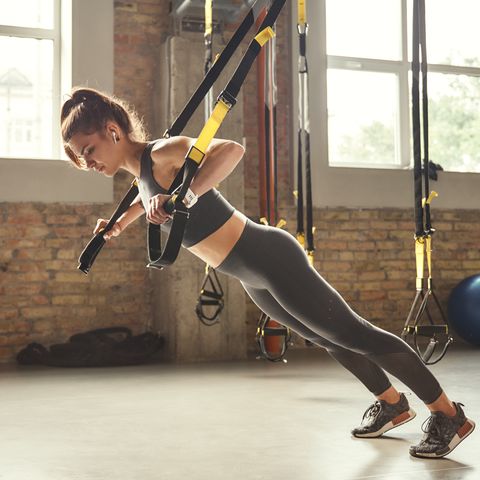
TRX
Try These TRX Workout Plans for a Well-Rounded Fitness Routine
TRX Training
Finding the time to squeeze all four types of exercise—endurance, strength, flexibility, and balance—into your week can feel like a Herculean task. The American Heart Association recommends at least 150 minutes per week of moderate exercise or 75 minutes per week of vigorous exercise, with a suggested goal of 30 minutes a day, five times a week. But that’s just endurance. You still need to budget time for the other three types, along with work, family, friends, and, occasionally, sleep. What you need is a workout plan that delivers maximum benefits in minimum time.
While there are only so many ways to cut down on endurance training while reaping the benefits, you can knock out an effective strength session in as little as 15 minutes. To help you through the process, celebrity fitness experts Jay Cardiello and Basheerah Ahmad have created 15-minute TRX workout plans for strength that you can do at home with your TRX Suspension Trainer. Each of the workouts targets a specific muscle group through two rounds of five moves performed for 60 seconds each with a 30 second break in between. (The total time, with breaks, comes to 15 minutes.)
For an upper body workout, Jay recommends a sequence of TRX exercises that include chest presses, low rows, squat rows, bicep curls, and tricep presses. His 15-minute TRX workout plan for core includes a series of TRX side planks, body saws, pikes, mountain climbers, and hip abductions.
For lower body work, Basheerah has you covered with five straightforward moves. Start with TRX hamstring curls, followed by hip presses, squats, mountain climbers, and lunges. (Yes, mountain climbers work both your core and your lower body!)
The next piece of your workout regimen is stability, but this one is easy to combine into your lower body workout. In stability work, you should focus on exercises that require you to stand on one foot. For example, you could try a TRX single leg squat to single leg balance reach progression, or a TRX crossing balance lunge to step side lunge combo. If you have time to stretch your 15-minute workout into a 20-minute workout, you can tack both of these onto the end of your leg workout. You can also try our ready-made TRX workout, which only takes 25 minutes of your time.
Now that you’ve got strength and balance out of the way, it’s time to think about flexibility. This one’s important because it improves your overall physical performance and helps you avoid injuries. While stretching after a workout will improve flexibility, it’s a reactive approach to training. You should also add a proactive approach, like yoga or the TRX Essentials: Flexibility video. In the video, TRX Director of Training and Development Fraser Quelch takes you through a 50-minute, real-time stretching routine designed to counteract the effects of daily life, and helps you understand what and why you’re stretching.
Even if you add all of these TRX workout plans to your fitness routine, that's still less than two additional hours per week to target the four types of exercise your body needs. Not sure which combination of workouts would work best for your schedule and goals? Our quick fitness assessment can help create a time-efficient plan tailored just for you. And really, if two hours a week can lead to a longer, healthier life, isn't it worth the investment?
Invest in yourself today with TRX Training gear.
TRX® YBELL NEO
BUY NOW
TRX® HOME2 SYSTEM
BUY NOW
TRX® BANDIT
BUY NOW
